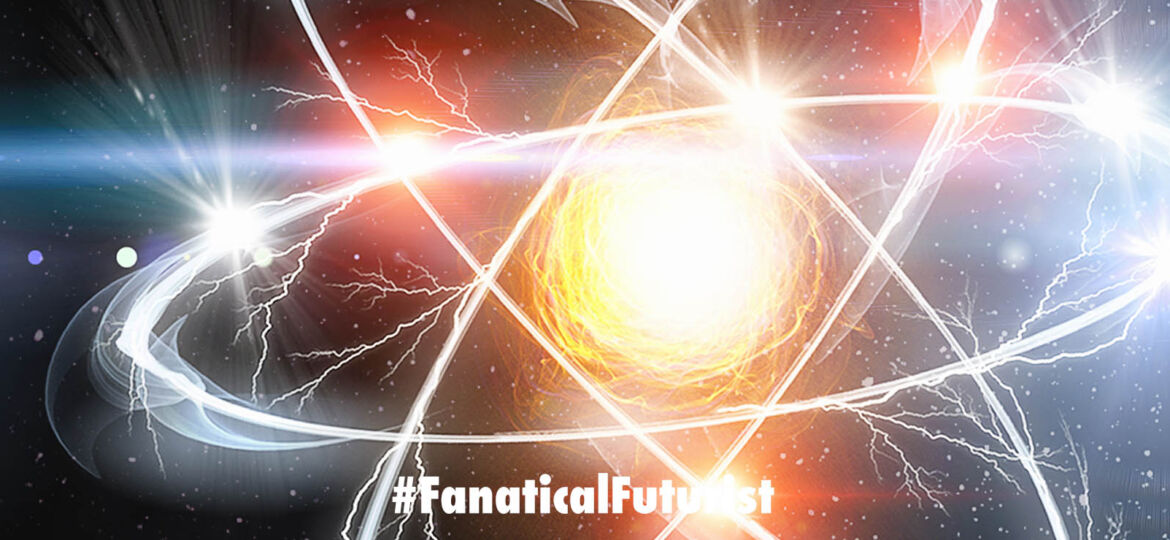
WHY THIS MATTERS IN BRIEF
Future communications could be atom based not necessarily electromagnetic or RF based … there’s a thought.
 Love the Exponential Future? Join our XPotential Community, future proof yourself with courses from XPotential University, read about exponential tech and trends, connect, watch a keynote, or browse my blog.
Love the Exponential Future? Join our XPotential Community, future proof yourself with courses from XPotential University, read about exponential tech and trends, connect, watch a keynote, or browse my blog.
Scientists at US research agency NIST have demonstrated using rubidium atoms in a Rydberg state as receivers that can pick up live video, and even play video games. And if that doesn’t sound that interesting then it was a demonstration of what’s widely regarded as the very first atomic based communications system, which for incredibly techy reasons could be a game changer in the future for how people – especially the military – communicate with one another.
Rydberg sensors are an odd emerging technology and are unusually incredibly sensitive to all kinds of electromagnetic fields, including radio signals, which makes them ideal for sensing – and spying on if necessary – almost every kind of radio frequency out there. The latest work was described in AVS Quantum Science and was the first time these new and incredibly powerful sensors have ever been used to receive video signals.
To get the new system to work the researchers applied a stable radio signal to a glass container filled with atoms in a Rydberg state. The modulated output was then fed to a television where an analog-to-digital converter transformed the signal into a video graphics array format for display. This work is part of the NIST on a Chip program.
Atom-based communications systems are of practical interest because they could be physically smaller and more tolerant of noisy environments than conventional electronics, says NIST. Adding video capability could enhance radio systems in, for example, remote locations or emergency situations.
Project leader Chris Holloway commented, “We figured out how to stream and receive videos through the Rydberg atom sensors. Now we are doing video streaming and quantum gaming, streaming video games through the atoms. We basically encoded the video game onto a signal and detected it with the atoms. The output was then fed directly into the TV.”
Researchers use two different wavelength lasers to prepare gaseous rubidium atoms in Rydberg states in a glass container. The team previously used the setup with caesium atoms to demonstrate the basic radio receiver and a “headphone” appliance to boost sensitivity a hundredfold.
To prepare to receive video, a stable radio signal is applied to the glass container filled with atoms. The team can detect energy shifts in the Rydberg atoms that modulate this carrier signal. The modulated output is then fed to a television. An analog-to-digital converter transforms the signal into a video graphics array format for display.
To display a live video signal or video game, this input is sent from a video camera to modulate the original carrier signal, which is then fed to a horn antenna directing the transmission to the atoms. Researchers use the original carrier signal as a reference and compare it to the final video output detected through the atoms to evaluate the system.
The researchers studied the laser beam sizes, powers and detection methods required for the atoms to receive video in standard definition format. The beam size affects the average time the atoms remain in the laser interaction zone. This time is inversely related to the bandwidth of the receiver; that is, a shorter time and smaller beam produce more data. That’s because atoms move in and out of the interaction zone, so smaller areas result in a higher signal “refresh rate” and better resolution.
The NIST researchers found that small beam diameters (less than 100 micrometers) for both lasers led to much faster responses and color reception. The system achieved a data rate on the order of 100 megabits per second, considered an excellent speed for video gaming and household internet. Research is ongoing to increase the system’s bandwidth and data rates. This work was partially funded by DARPA and the NIST on a Chip program.















